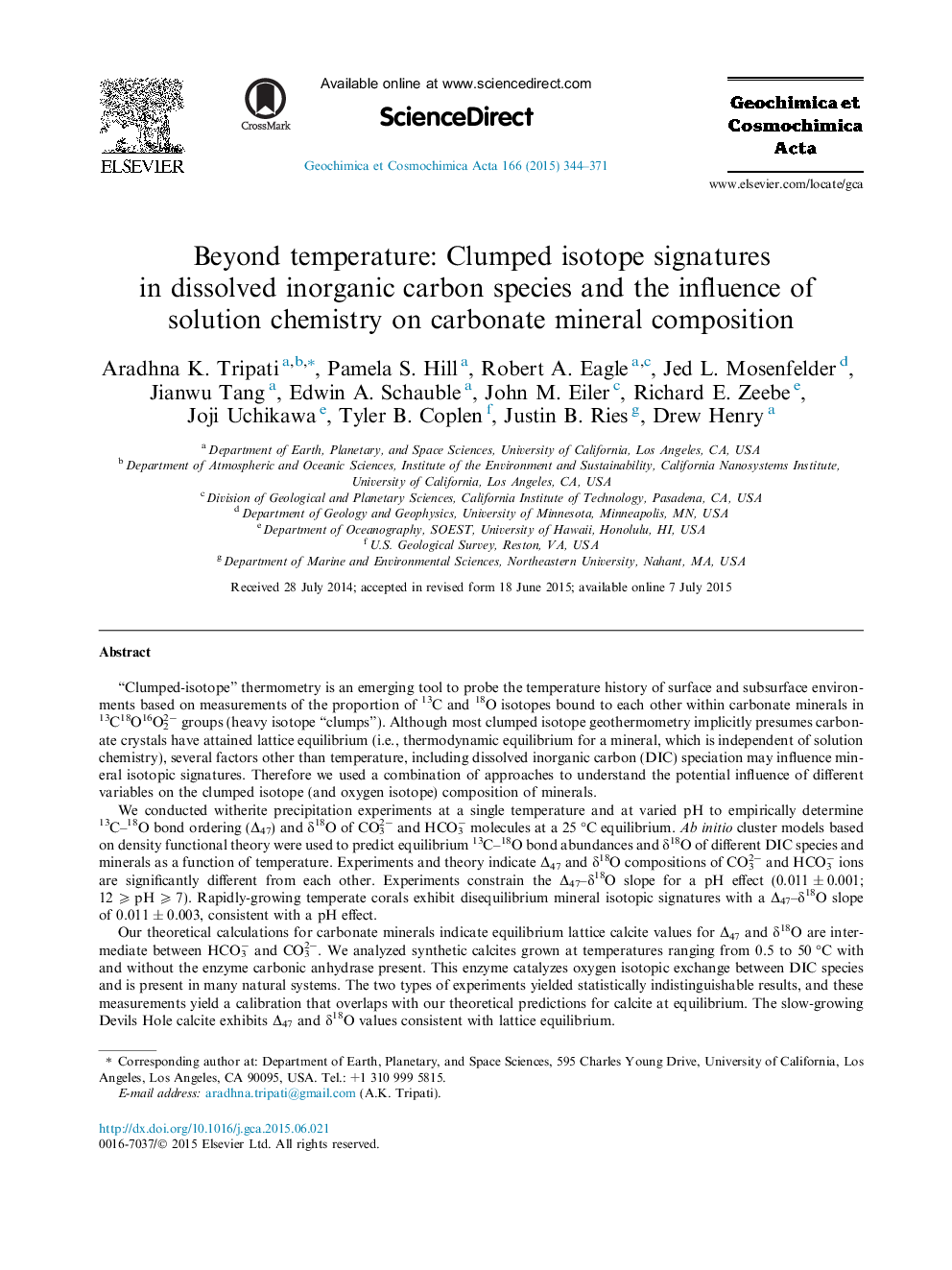| Article ID | Journal | Published Year | Pages | File Type |
|---|---|---|---|---|
| 6437823 | Geochimica et Cosmochimica Acta | 2015 | 28 Pages |
Abstract
Factors influencing DIC speciation (pH, salinity) and the timescale for DIC equilibration, as well as reactions at the mineral-solution interface, have the potential to influence clumped-isotope signatures and the δ18O of carbonate minerals. In fast-growing carbonate minerals, solution chemistry may be an important factor, particularly over extremes of pH and salinity. If a crystal grows too rapidly to reach an internal equilibrium (i.e., achieve the value for the temperature-dependent mineral lattice equilibrium), it may record the clumped-isotope signature of a DIC species (e.g., the temperature-dependent equilibrium of HCO3â) or a mixture of DIC species, and hence record a disequilibrium mineral composition. For extremely slow-growing crystals, and for rapidly-grown samples grown at a pH where HCO3â dominates the DIC pool at equilibrium, effects of solution chemistry are likely to be relatively small or negligible. In summary, growth environment, solution chemistry, surface equilibria, and precipitation rate may all play a role in dictating whether a crystal achieves equilibrium or disequilibrium clumped-isotope signatures.
Related Topics
Physical Sciences and Engineering
Earth and Planetary Sciences
Geochemistry and Petrology
Authors
Aradhna K. Tripati, Pamela S. Hill, Robert A. Eagle, Jed L. Mosenfelder, Jianwu Tang, Edwin A. Schauble, John M. Eiler, Richard E. Zeebe, Joji Uchikawa, Tyler B. Coplen, Justin B. Ries, Drew Henry,
